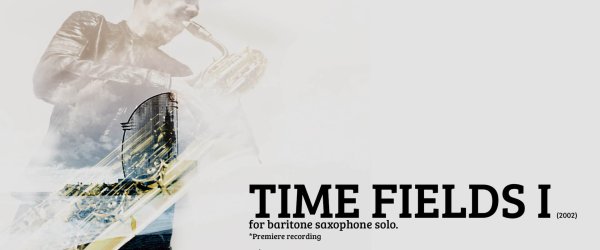
Cover of the printed edition
In my opinion, HENDIA is an essential work of the original repertoire for baritone saxophone solo. It is short and intense, as a very good coffee. Enjoy!
The Composer
SIXTO MANUEL HERRERO RODES (Rafal, Spain, 1965) is a saxophonist, composer, conductor and professor of saxophone at the Conservatorio Superior de Música “Oscar Esplà” in Alicante. He has a PhD at the Universidad Politécnica de Valencia. Herrero has been awarded in several Composition competitions in Europe and America. His works have been performed in different music festivals in the world.
Click here to read more about the composer.
Details of the Work
Publisher: Rivera Editores, Valencia (ESP)
Duration: Around 5:00
Range (written): Bb2 – C#6
TECHNIQUES: Wide range of dynamics and timbres. Tonguing accuracy. Diversity of articulations and vibratos. Some fast excerpts. Altissimo register. Multiphonic sounds. Key sounds. Voice.
PERFORMANCE: Playing with intensity and dramatism. The composer suggests singing a saeta or reciting a poem at the end of the work.
Meaning and structure of Hendia
To break, to crack, to constantly seek the quejío, the aching cry of flamenco hidden within the polished society of classical music. The search for solitude on stage, where the artist wields sound as language to claim a forgotten right. (Sixto Herrero, 2002)
Spanish saxophonist Javier De La Vega commissioned Herrero a set of solo pieces for saxophone. Titled “Viajeros al tren”, this compilation contains one work for each of the members of the saxophone quartet. HENDIA is the one for the baritone.
Herrero imagined a series of emotional states in the formation of a musician throughout their artistic life. In this case, HENDIA reflects the end of his/her development. The piece contains elements purely drawn from flamenco, where the saxophonist should perform as an actor. Therefore, the content of the work synthesizes, in a single sound corpus, tradition (flamenco) and modernity (advanced techniques and other resources of the new languages of the 20th and 21st centuries).
Technically, HENDIA is not a very difficult piece, which allows you to focus more on the expressive and performative elements. However, it does require good control of certain extended techniques, such as the use of the voice (treated both independently and integrated into the sound of the instrument), the altissimo register in different dynamics (from ppp to fff), timbral changes on the same note, or the definition of certain multiphonics.
Performing work is very important, as the piece must always be played with intensity. You should create moments of calm and seek a continuity of the musical discourse, in spite of the constant fluctuations and pauses. Furthermore, at the end of the piece the composer requests to sing a saeta or recite a poem while playing a rhythm with keys sounds. This more theatrical part of the work must be performed with conviction.
HENDIA works very well in concert. I encourage you to work on it!
—
Would you like to know more about HENDIA by Sixto Herrero? Would you like to work on it? Don’t hesitate to contact me for more questions.
Joan Martí-Frasquier
Barcelona, July 2018
Update: April 2025





